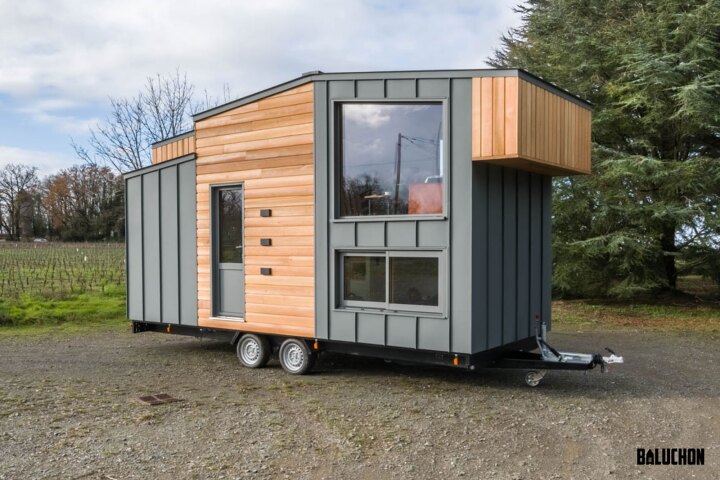After several years in the making, MAD Architects has finally completed its large mixed-use development adjacent to a park in Beijing's central business district. The Chaoyang Park Plaza draws inspiration from Chinese paintings of nature and includes a pair of distinctive towers that are meant to resemble jutting mountain peaks.
The Chaoyang Park Plaza measures a total of 220,000 sq m (2,368,060 sq ft), spread over 10 buildings. It's the two office towers that are the main draw, though.
Rising to a maximum height of 142 m (465 ft)-tall, they are placed close together and joined by a shared glass atrium, likened to a drawstring by the firm. The surrounding smaller buildings, which include apartments and commercial space, are intended to bring to mind rocks that have eroded over a long period of time. Their placement looks random but has been carefully chosen to create a kind of open urban garden.
"The overall environment is shaped by smooth, curved surfaces of black and white, creating a quiet and mysterious atmosphere," says MAD. "It is one that evokes the emotion and aesthetic resonance of a traditional Chinese ink painting, creating a tranquil escape from the surrounding, bustling urban environment. The landscape that weaves itself in between the buildings incorporates pine trees, bamboo, rocks and ponds ─ all traditional Eastern landscape elements that imply a deeper connection between the architecture and classical space."

The Chaoyang Park Plaza has been awarded LEED Gold certification (a green building standard) and the office towers sport vertical fins on their exterior glass facade that function as an energy-efficient ventilation and filtration system – the latter no doubt crucial in smoggy Beijing. At the base of the towers is a large pond that, according to the firm, helps lower the interior temperature in the summer.
MAD also recently completed another high-profile mountainous Chinese project that's inspired by nature, the Huangshan Mountain Village, which is designed to blend into the beautiful UNESCO Heritage protected landscape, as shown below.

The cluster of residential buildings that make up the Huangshan Mountain Village comprise apartments conceived as quiet retreats, each with an expansive balcony. Their shape is informed by nearby tea fields and are meant to look like they were sculpted by the wind, so that no two are the same.
Source: MAD Architects






























